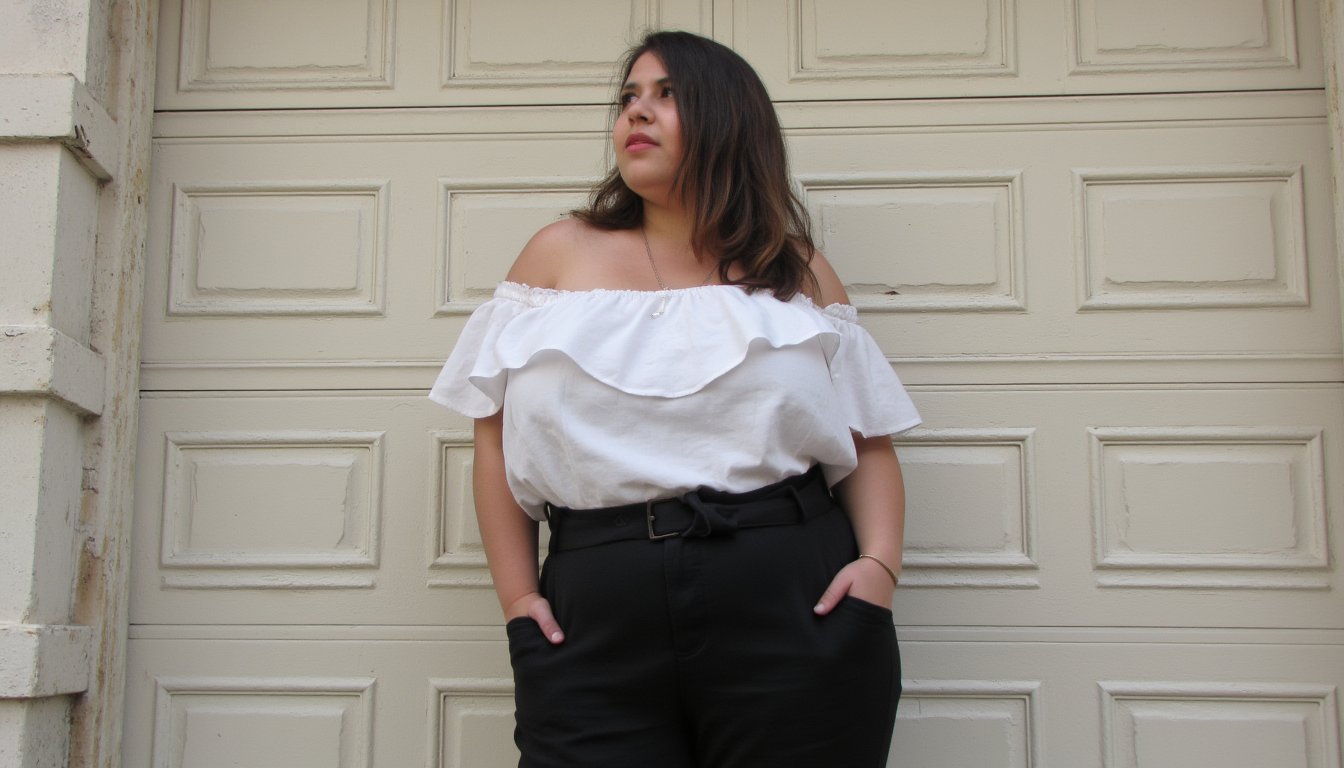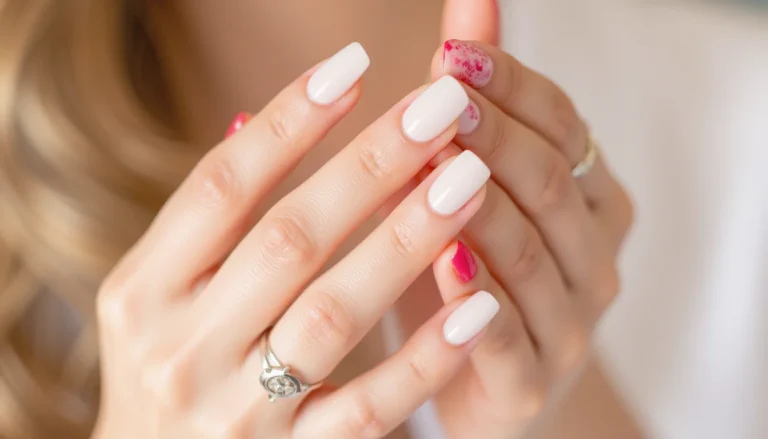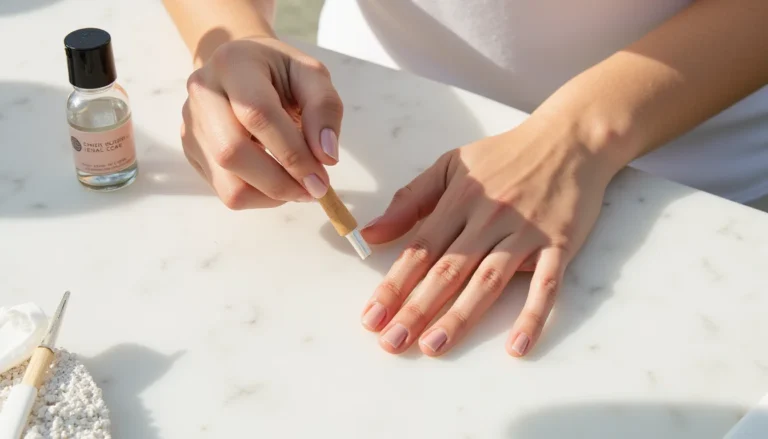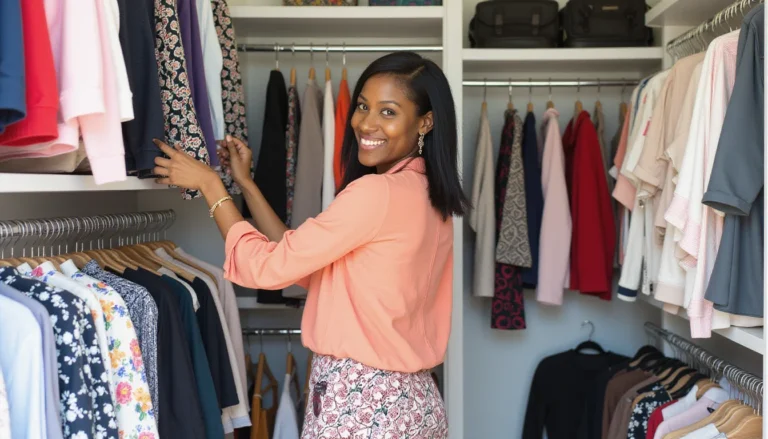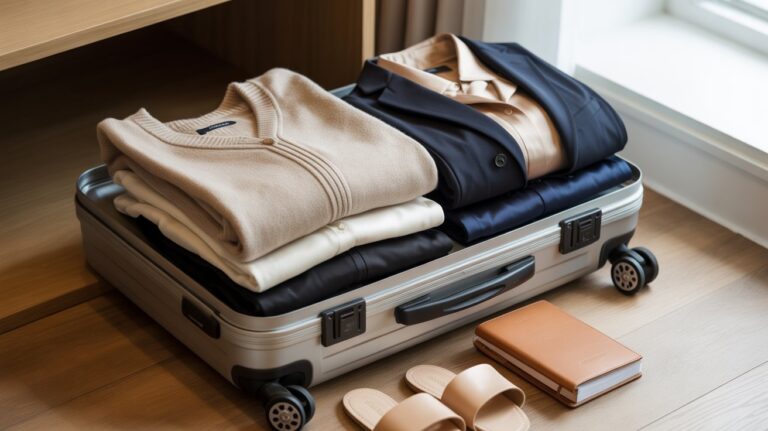The Complete Body Type Style Guide: Dressing for Your Shape with Confidence
Understanding your unique body type is the foundation of effortless style and unshakeable confidence. This comprehensive guide reveals how to dress for your natural shape while embracing the latest 2024-2025 fashion trends.
You’ll discover professional styling secrets that celebrity stylists use with their A-list clients. Rather than hiding perceived “flaws,” we’ll show you how to celebrate your individual beauty through strategic styling that makes you look and feel amazing.
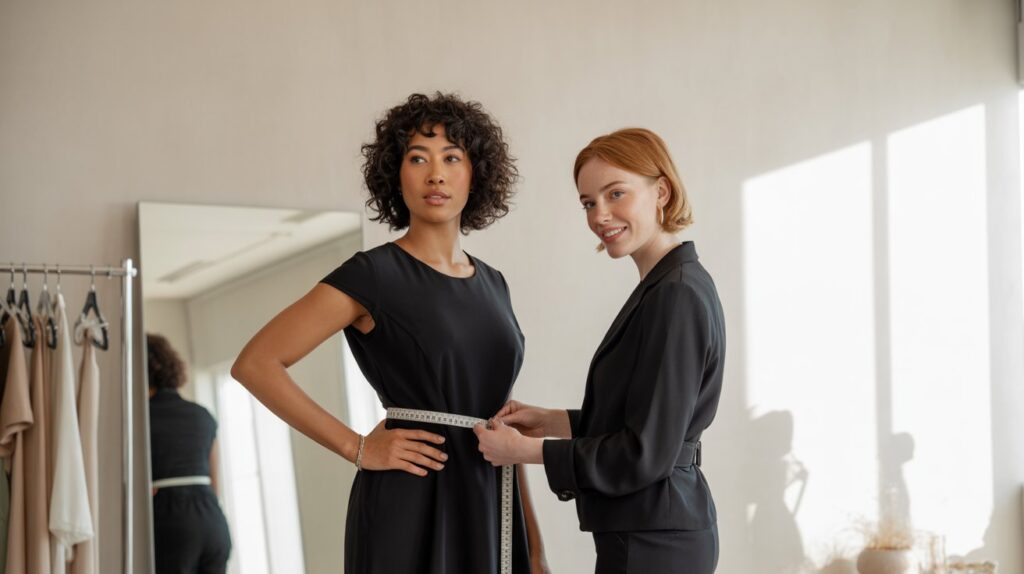
Why this matters now: The fashion industry has evolved beyond outdated rules about “problem areas” to embrace body positivity and individual expression. When you understand how to dress for your specific body type, you’ll save time shopping, feel more confident in your clothes, and develop a signature style that’s authentically you.
According to research from the Harvard Business Review, clothing choices significantly impact confidence and performance. Meanwhile, industry data shows that 73% of women wear incorrect clothing sizes and spend an average of $1,986 annually on clothes they barely wear.
Mastering your body type styling can revolutionize both your wardrobe and your confidence.
The foundation of great style lies in proportion, fit, and personal expression. While body type guidelines provide helpful starting points, remember that you are unique—most people are combinations of different types, and the goal is finding what makes you feel fabulous.
This guide combines traditional styling wisdom with modern body-positive approaches, professional techniques from celebrity stylists, and practical advice for incorporating current trends into your personal style. Recent studies from the Fashion Institute of Technology demonstrate that when individuals dress according to their body type preferences, they report 40% higher satisfaction with their appearance and significantly improved self-confidence.
Understanding the five main body types with confidence
The key to successful body type styling starts with accurate identification of your natural shape. Unlike outdated approaches that focused on “hiding flaws,” modern styling celebrates your unique proportions while creating balanced, flattering silhouettes.
The five main body types each have distinct characteristics and styling advantages that, when understood properly, become your greatest style assets.
How to identify your body type accurately
Take measurements using a soft measuring tape around the fullest parts of your shoulders, bust, waist (at its narrowest point), and hips. Compare these measurements using simple ratios rather than focusing on exact numbers. Look for differences of 5% or more between measurements, and consider where you naturally gain or lose weight first.
According to the CDC’s National Health and Nutrition Examination Survey, the average American woman measures 38.7 inches at the waist and 40.2 inches at the hips, providing helpful context for understanding where you fit within population averages.
Visual assessment is equally important. Stand in front of a full-length mirror wearing well-fitted undergarments and observe your natural silhouette. Notice which areas you’d like to emphasize versus those you want to balance. Remember that most people combine elements from multiple body types—this is completely normal and simply means you have more styling options available.
Consider consulting with a professional stylist or using multiple assessment methods to confirm your body type. Your body type may also change throughout different life stages, so reassessing periodically ensures your styling stays relevant and flattering.
Apple body type: Embracing your natural curves
Apple shapes carry weight primarily in the midsection with broader shoulders, fuller busts, and typically slimmer legs and hips. Your styling superpower lies in highlighting your beautiful shoulders, décolletage, and legs while creating a more defined waistline through strategic clothing choices.
Best styling strategies for apple shapes:
- Empire waist dresses and tops that sit just below the bust create an elongated torso
- V-necks and scoop necklines draw attention upward and elongate the torso
- A-line silhouettes skim over the midsection without clinging
- Wide-leg trousers and bootcut jeans balance your proportions beautifully
- Structured blazers that hit at the hipbone create a streamlined silhouette
Colors and patterns work strategically: Use darker, solid colors around your midsection with brighter colors or patterns on your legs and upper chest. Diagonal lines and larger prints can cleverly distract from the waist area while vertical stripes elongate your entire silhouette.
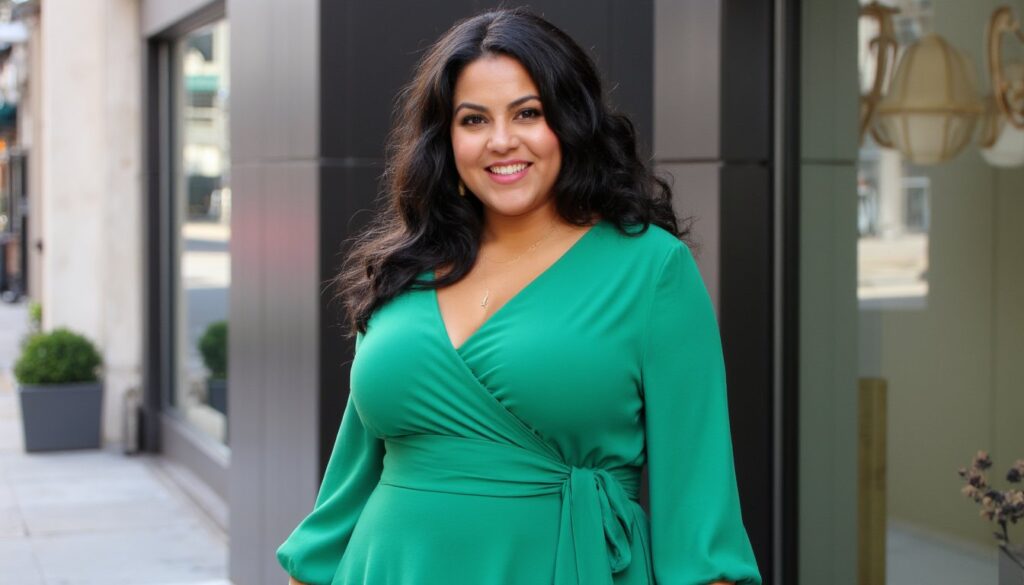
Professional styling secrets for apple types: Celebrity stylist Erin Walsh recommends trapeze cuts for apple shapes, noting that “it’s all about proportion—balance the silhouette so you don’t lose your shape entirely.” The key is creating definition without restriction.
Avoid: High-waisted bottoms, belts at your natural waistline, crop tops, and double-breasted jackets that add bulk to your midsection.
Pear body type: Balancing your beautiful proportions
Pear shapes have narrower shoulders and bust measurements compared to their hips and thighs, often with well-defined waists. Your styling advantage is creating upper body volume and emphasis while showcasing your naturally narrow waist and balancing your overall silhouette.
Optimal styling approaches for pear shapes:
- Boat necklines and off-shoulder styles broaden your shoulder line
- Structured tops with embellishments around the shoulders or bust area
- A-line skirts that skim over hips rather than clinging to them
- High-waisted bottoms emphasize your naturally small waist
- Wide-leg pants and bootcut jeans create balance without highlighting the hip area
Strategic color and pattern use: Bright colors, bold patterns, and horizontal stripes work beautifully on your upper body, while darker, solid colors on your lower half create balance. Avoid busy patterns, bright colors, or embellishments around your hip and thigh area.
Professional insight: Fashion experts recommend the “60-40 rule” for pear shapes—60% of your outfit’s visual interest should focus on your upper body, with 40% on the lower half. This creates natural balance without appearing contrived.
Shopping smart for pear types: Look for tops with interesting necklines, shoulder details, or textural elements. When choosing bottoms, prioritize fit through the waist and hip with styles that skim rather than cling to your thighs.
Hourglass body type: Celebrating your natural balance
Hourglass figures have approximately equal bust and hip measurements with waists that are at least 25% smaller, creating naturally balanced proportions. Your styling strength lies in maintaining your natural silhouette without hiding your beautiful curves under shapeless clothing.
Essential styling principles for hourglass figures:
- Fitted tops and dresses that follow your natural curves showcase your proportions perfectly
- Belted styles and wrap designs emphasize your defined waistline
- High-waisted bottoms highlight your natural waist placement
- Pencil skirts and bodycon dresses celebrate your balanced proportions
- Tailored blazers with defined waists maintain your silhouette in professional settings
Color and pattern freedom: As an hourglass, you can wear virtually any color or pattern successfully. Focus on fit over color, using darker belts or waist-defining elements to emphasize your natural shape. Avoid busy patterns that obscure your silhouette.
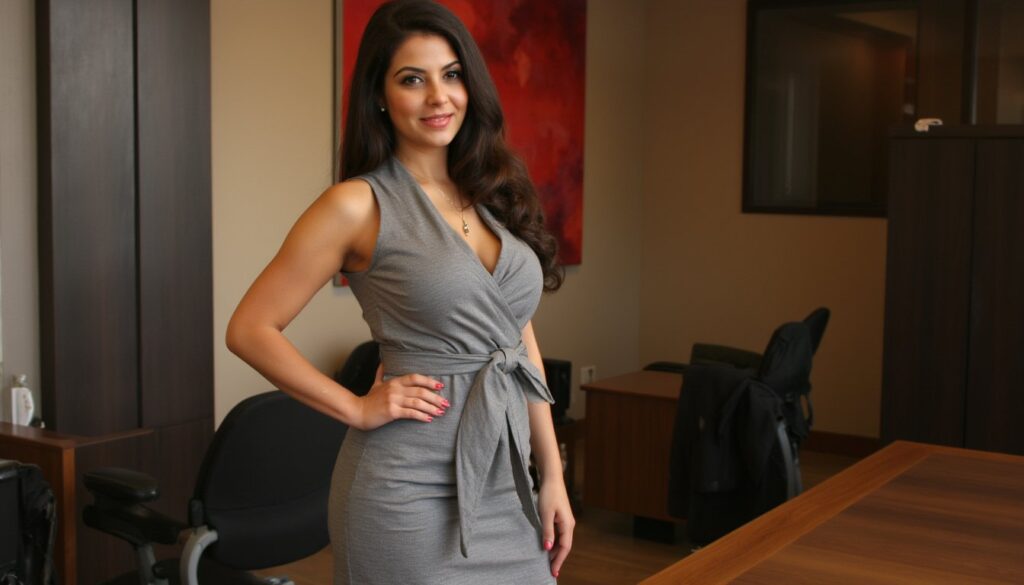
Professional styling wisdom: Celebrity stylist Elizabeth Stewart emphasizes that for hourglass figures, “fit is everything—tailor pieces for perfect proportions, particularly paying attention to hem lengths and armholes.” The investment in proper tailoring pays dividends in how every piece looks on your body.
Common mistakes to avoid: Shapeless, oversized clothing that hides your waist, straight-cut dresses without definition, and heavy embellishments at the bust or hip that disrupt your natural balance.
Rectangle body type: Creating curves and definition
Rectangle body types have similar measurements across bust, waist, and hips with minimal natural curve definition. Your styling opportunity lies in creating the illusion of curves through strategic clothing choices, adding dimension and visual interest to your silhouette.
Curve-creating strategies for rectangle bodies:
- Peplum tops and dresses add hip volume and waist definition
- Belted styles at various points experiment with where definition looks best on your torso
- Layered outfits create depth and dimensional interest
- Ruffles and embellishments add texture and visual curves
- Wide-leg pants and A-line skirts create lower body volume
Pattern and texture advantages: Rectangle body types can successfully wear bold patterns, color blocking, and horizontal stripes. Use contrasting textures and colors to create visual interest and dimension throughout your outfits.
Professional technique: Fashion stylists often use the “third piece rule” for rectangle body types—add a vest, cardigan, or structured jacket to create additional lines and layers that suggest curves.
Building a rectangle-friendly wardrobe: Invest in pieces with interesting details like asymmetrical hemlines, gathered fabric, or structural elements that add visual weight and dimension to your frame.
Inverted triangle body type: Balancing broad shoulders
Inverted triangles have broader shoulders and bust measurements compared to their hips, often with less defined waistlines. Your styling goal is creating lower body volume and visual weight while softening your shoulder line through strategic clothing choices.
Balancing techniques for inverted triangle shapes:
- Wide-leg pants and A-line skirts add volume to your lower body
- Deep V-necks and narrow necklines minimize shoulder width visually
- Hip details like pockets or embellishments draw attention downward
- Darker colors on top with lighter bottoms shift visual balance
- Flowy, voluminous bottoms create the illusion of wider hips
Strategic styling choices: Avoid shoulder pads, off-shoulder styles, and wide necklines that emphasize your already broad shoulders. Instead, focus on creating visual interest and volume in your lower half while choosing fitted or slightly tapered tops.
Professional approach: Celebrity stylists working with inverted triangle clients often use “bottom-heavy” styling—more visual weight, brighter colors, and interesting details concentrated in the lower portion of outfits.
Accessories matter: Choose statement bottoms over statement tops, focus on shoes and bags that add visual weight to your lower half, and minimize shoulder-emphasizing jewelry in favor of pieces that draw the eye downward.
Professional styling secrets that transform your look
The difference between good style and exceptional style lies in understanding professional techniques that celebrity stylists use with their high-profile clients. These insider secrets can elevate any wardrobe, regardless of budget or body type, by focusing on fit, proportion, and strategic styling choices.
The foundation of flawless fit
Proper undergarments form the foundation of every great outfit. Research from the American Journal of Public Health confirms that 85% of women wear incorrect bra sizes, which dramatically impacts how all clothing fits and looks. Invest in a professional bra fitting and quality undergarments that smooth and support without restricting movement or comfort.
Tailoring transforms everything. Even inexpensive clothing can look luxurious with proper alterations. Focus on hemlines, sleeve lengths, and waist definition—small adjustments create significant improvements in how clothes fit your unique proportions.
Professional stylists use the “three-point rule”: Every outfit should have three points of interest (color, texture, or detail) distributed throughout the silhouette. This creates visual balance and prevents looks from appearing flat or one-dimensional.
Advanced color and proportion techniques
Understanding your personal color palette revolutionizes shopping and styling. Psychology research published in the Journal of Experimental Psychology demonstrates that colors significantly impact mood, confidence, and how others perceive us. Colors that complement your skin tone, hair, and eyes make you appear more vibrant and healthy, while unflattering colors can wash you out regardless of how well clothes fit.
The 33-66 proportion rule creates length: Aim for 33% of your outfit above the waist and 66% below for the most flattering proportions. This works particularly well for petite frames and can be adjusted slightly based on your specific body type and desired silhouette.
Professional layering techniques: Combine different textures, weights, and colors strategically. Layer lightweight fabrics like silk under structured pieces for depth, and use contrasting textures (smooth silk with chunky knits) for visual interest.
Shopping strategies that save time and money
Build a body-type specific capsule wardrobe: Focus on 8-10 foundational pieces that flatter your specific shape, then add seasonal trends and personal expression pieces. This approach reduces decision fatigue while ensuring everything in your closet works for your body.
Bureau of Labor Statistics data shows that the average American household spends $1,945 annually on apparel, making strategic wardrobe building essential for maximizing both style and budget.
Shop your existing wardrobe first. Professional stylists often work with clients’ existing pieces, showing them new ways to combine and style what they already own. Experiment with different styling approaches before purchasing new items.
Invest strategically in fit and quality: Spend more on pieces that touch your body directly (bras, jeans, blazers) and foundation pieces you’ll wear frequently. Save money on trendy pieces and accessories that change seasonally.
Current 2024-2025 fashion trends for every body type
Fashion trends offer exciting opportunities to refresh your style while maintaining what works best for your body type. The key to successfully incorporating trends lies in adapting them to flatter your specific shape rather than wearing them exactly as shown on the runway.
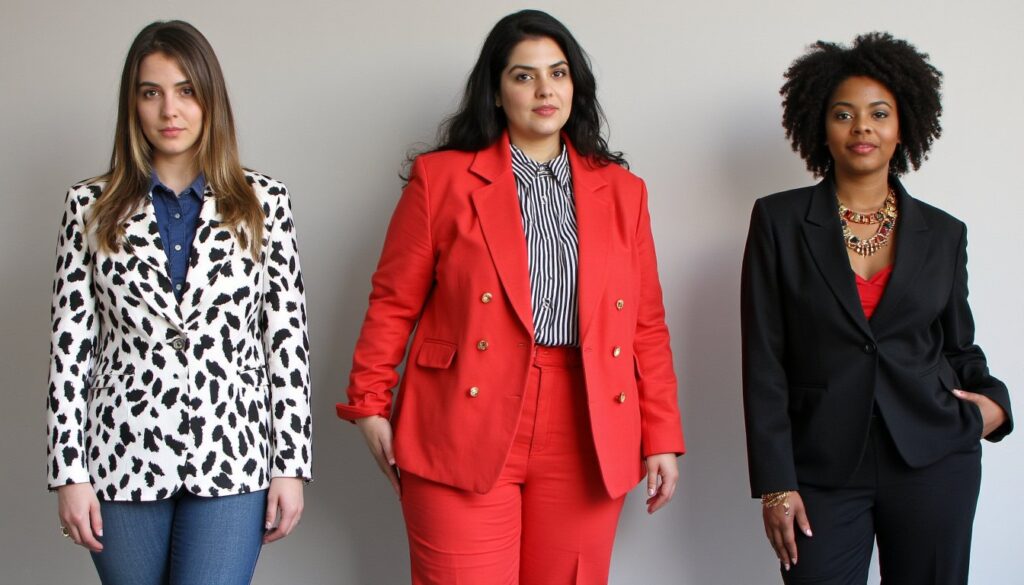
Tailored oversized suits for different bodies
The dominant 2025 suit trend requires careful body-specific adaptation. Hourglass figures should add belts or choose styles with natural waist definition to maintain their curves. Pear shapes benefit from structured blazers with wide-leg trousers and lighter-colored tops that draw attention upward.
Apple shapes should choose single-breasted blazers that skim the torso with vertical stripes or monochromatic color schemes for a streamlined effect. Rectangle body types can add dimension with subtle shoulder details or cropped blazers that create waist definition.
Inverted triangle shapes should focus on wide-leg pants that add lower body volume while avoiding exaggerated shoulder details on blazers. The key for all body types is ensuring the “oversized” elements don’t overwhelm your frame or obscure your natural proportions.
Strategic pattern placement and maximalist prints
2025’s bold pattern trend works beautifully when applied thoughtfully to different body types. Hourglass figures can wear fitted pieces with bold patterns or small prints throughout, while pear shapes should concentrate patterns on their upper body with solid bottoms.
Apple shapes benefit from placing prints on skirts or trousers to shift attention from the midsection, while rectangle body types can use layered prints to add depth and dimension. Inverted triangle shapes should focus printed elements on their lower half for better balance.
Professional pattern mixing: Combine prints of different scales (large florals with small stripes) or stick to the same color family when mixing patterns. This creates sophisticated looks that feel current without being overwhelming.
Sustainable trend incorporation
Choose trend pieces that align with your body type and personal style rather than following every trend blindly. This approach reduces waste while building a more cohesive, functional wardrobe that truly serves your lifestyle and body.
Focus on accessories and smaller pieces to experiment with trends—scarves, bags, and jewelry allow trend experimentation without major wardrobe investments. Classic silhouettes in trending colors or fabrics offer longevity while feeling current.
Building confidence through body-positive styling
True style confidence comes from understanding and celebrating your unique body rather than trying to fit unrealistic standards. The most stylish people aren’t necessarily those with “perfect” bodies—they’re individuals who dress authentically and confidently for their specific shape and lifestyle.
Clinical research from Body Image: An International Journal of Research shows that positive body image and clothing satisfaction are strongly correlated with overall life satisfaction and mental well-being.
Shifting from “hiding flaws” to “highlighting assets”
Modern styling focuses on enhancing your favorite features rather than camouflaging areas you’re less confident about. Every body type has inherent advantages and beautiful features that deserve to be celebrated. This positive approach creates more authentic, confident styling choices.
Practice self-compassion during your style journey. Developing personal style takes time and experimentation. Be patient with yourself as you discover what works best for your body, lifestyle, and personal preferences.
Remember that fit matters more than size. Sizes vary dramatically between brands and styles. Choose pieces that fit your body well today, regardless of the number on the label. Well-fitted clothing in any size looks more expensive and flattering than ill-fitting designer pieces.
Developing your personal style within body type guidelines
Body type recommendations provide helpful starting points, not rigid rules. Use these guidelines as tools while developing your unique style expression. Your personality, lifestyle, and personal preferences should always influence your styling choices.
Experiment with different approaches to find what feels authentic. Some people prefer more structured, tailored looks while others gravitate toward flowing, bohemian styles. Both can be adapted to flatter any body type when the principles of fit and proportion are applied thoughtfully.
Trust your instincts and wear what makes you feel confident. The most important aspect of any outfit is how it makes you feel when you wear it. Confidence is the best accessory and transforms any look.
Frequently asked questions about body type styling
How do I determine my exact body type if I’m between categories?
Most people combine elements from multiple body types, which is completely normal and gives you more styling options. Focus on your most prominent characteristics and use styling techniques that address your primary concerns. For example, if you have characteristics of both apple and hourglass shapes, emphasize waist definition while being mindful of midsection proportions.
Consider taking measurements at different times and in different ways to get a complete picture. Some people’s body types change with weight fluctuations, age, or life stages like pregnancy. Reassess periodically and adjust your styling approach accordingly.
Can my body type change over time?
Yes, your body type can shift due to weight changes, aging, pregnancy, or hormonal changes. The key is staying flexible with your styling approach and reassessing your needs as your body changes. What worked in your twenties may need adjustment in your forties, and that’s perfectly normal.
Focus on how you feel in your clothes now rather than trying to dress for a past or future version of your body. Maintaining a wardrobe that fits and flatters your current shape builds confidence and ensures you always look your best.
What if I don’t like the clothing recommendations for my body type?
Body type guidelines are suggestions, not requirements. If recommended styles don’t align with your personal aesthetic or lifestyle, adapt them to work for you. For example, if you’re a pear shape who prefers minimalist style over embellished tops, choose clean-lined boat necks or structured shoulders instead of ruffles or patterns.
Work with a professional stylist to find alternatives that achieve the same proportional goals using different styling approaches. There are multiple ways to create balance and flattery for any body type.
How do I incorporate my personal style preferences with body type guidelines?
Start with your personal style preferences and adapt body type principles to work within that framework. If you love bohemian style but have an apple shape, choose flowing tops with empire waists and structured elements rather than completely shapeless pieces.
The goal is finding the intersection between what you love to wear and what flatters your body. This might require some experimentation, but the result is a wardrobe that feels authentic while looking amazing on your specific shape.
Should I consider my height when applying body type guidelines?
Absolutely. Petite frames may need to adjust proportions and scale of styling elements, while taller figures can handle more dramatic styling choices. For example, petite apple shapes should choose shorter hemlines and smaller-scale patterns, while tall rectangle shapes can wear longer layers and oversized elements successfully.
Consider your overall proportions, not just your body type. A petite hourglass has different styling needs than a tall hourglass, even though both share the same basic body type characteristics.
💫 Personal Style Tip Generator
Your journey to confident styling
Mastering your body type styling creates a foundation for lifelong confidence and effortless style. The most important insight is that these guidelines serve as tools for enhancement rather than rigid rules for restriction. Every body type has unique advantages and beautiful features that deserve celebration through thoughtful, strategic styling choices.
Remember that style is deeply personal and should reflect your individuality. While understanding your body type provides valuable guidance for fit and proportion, your personal preferences, lifestyle needs, and authentic self-expression should always influence your final styling decisions. The most stylish individuals aren’t those who follow every rule perfectly—they’re people who understand the principles and adapt them confidently to create their own signature look.
Your body type may evolve throughout different life stages, and that’s completely normal. Stay flexible in your approach, reassess your needs periodically, and remember that the goal is always to feel confident and comfortable in your own skin. Invest in quality pieces that fit well, understand your personal color palette, and build a wardrobe that serves your real life rather than an idealized version of yourself.
The fashion industry continues evolving toward greater inclusivity and body positivity, offering more options than ever for every body type. Embrace this positive change by approaching your own styling journey with curiosity, self-compassion, and confidence. Your unique body type isn’t a limitation to overcome—it’s your personal styling superpower waiting to be unleashed. </article>

